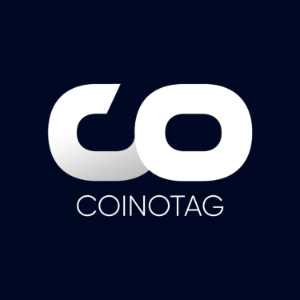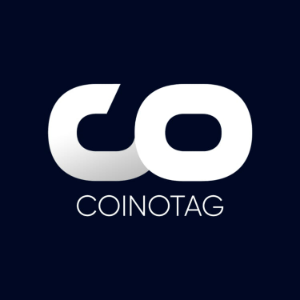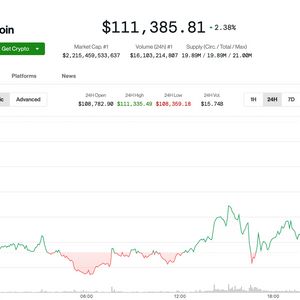Manole Capital: The Payment Perspective On Stablecoins
20 min read
Summary Stablecoins are a disruptive force in payments, but represent more of an opportunity than an existential threat to Visa and Mastercard. The GENIUS Act provides regulatory clarity for stablecoins, legitimizing them and paving the way for institutional adoption and innovation in digital finance. Stablecoins’ best use cases are in B2B cross-border payments and remittances, while consumer credit cards remain dominant due to rewards, credit, and global acceptance. Payment networks are integrating stablecoins, leveraging their strengths, and maintaining wide moats; stablecoins will not materially disrupt the secular growth of digital payments. Manole Capital Management Stablecoins July 2025 Introduction : Our version of FINTECH is “anything that utilizes technology to improve an established process.” In this research note, we will discuss the market’s latest infatuation – stablecoins. We will highlight the GENIUS Act, Senator Durbin’s CCCA, and the potential impact on what we consider the quintessential FINTECH business – the payments industry. Stablecoins : For us, the payment sector is the quintessential FINTECH business, and the biggest issue facing many of our payment companies is whether stablecoins are friend or foe. We believe stablecoins represent the most disruptive force in the payments industry in over a decade. Over the next couple of pages, we will attempt to explain stablecoins, decipher their most logical use case and provide our thoughts on why we believe they are more of an opportunity than a threat. Stablecoins are digital currencies that are pegged 1:1 to stable assets like the US dollar or other fiat currencies. The primary benefits of stablecoins could be speed, cost efficiency and the stability and transparency of utilizing the blockchain (see Footnote A). The infrastructure of the blockchain ensures that every transaction is auditable and immutable, which could potentially lower fraud risk. By pegging stablecoins to the US dollar, issuers can avoid the volatility and large up-and-down price swings Bitcoin and other cryptocurrencies have. This stability is a major advantage of stablecoins, versus using Bitcoin for payment transactions. We want to simplify an extraordinarily complex subject by showing how stablecoins operate. First, a user needs to send US dollars to a stablecoin issuer. Right now, the market is dominated by two firms (Tether and Circle) which have roughly 90% market share (per Circle’s IPO documentation). Next, the stablecoin issuer deposits those US dollars at a bank. US dollars are held in cash to meet any short-term liquidity needs, or it can be invested in short-duration, cash equivalent yield bearing government bonds (like Treasuries). Once this is completed, the user is provided with a value of stablecoin equivalents to either hold at a centralized custodian or use at a self-custodial wallet on the blockchain. We always try to simplify the complex, and while this sounds complicated, it is no different than depositing money at your local bank. The bank takes your dollars, lets you spend your money (example: debit card), and can even provide a modest yield (example: saving accounts). Payment Economics : We have published numerous articles on how a payment transaction occurs and “who makes what” on a typical credit card transaction. Feel free to search Seeking Alpha for Manole Capital and any of our prior proprietary research. Once again, to simplify a complicated subject, merchants have a roughly $2.50 cost to accept a $100 credit card transaction. The vast majority of that $2.50 in fees, or $1.75 goes to the card issuing bank (70%), for providing a line of credit to their customer. The entity that handles the authorization, clearing and settlement of a credit card transaction is called a merchant acquirer or payment processor, and it makes $0.60 or 24% of the transaction fees. Lastly, the payment networks (Visa and Mastercard) earn the smallest piece or $0.15 or 6% of the economics. Ever since the payment networks went public (Mastercard in 2006 and Visa in 2008), merchants have been complaining about the costs they bear to accept payment at the PoS (point-of-sale). Merchants frequently highlight the high fees they incur to accept card payments and cite that they incurred $172 billion in transaction fees in 2023. It’s worth asking: do merchants scrutinize other operating costs – like utilities, labor, or rent – with the same intensity? Why is this subject so important to merchants, banks, and the payment networks? It is because the size of the TAM (total addressable market) is so enormous. For example, here in the US, mobile and eCommerce share of purchase transactions are growing 2x to 3x faster than retail volumes. As we continue to emphasize in our research, we believe this online, secular growth should continue well into the future. Just in the US, eCommerce TAM was $3.2 trillion in 2024, and it should grow at 8% to 10% through 2028 (according to multiple forecasts). With such a large “honey pot” of fees, merchants like Wal-Mart and Amazon would love to lower their card acceptance costs. However, both already benefit from the ability to leverage their size and negotiate lower interchange rates than other retailers. A fair question remains – would merchants pass savings from lower interchange fees onto consumers, or would they retain the benefit? The GENIUS Act & the CCCA : On June 13th, 2025, the stock market fell by over (1%), in part due to Israel’s pre-emptive attack on Iran’s nuclear infrastructure. However, many of our payment companies fell over (5%) that day, which we attribute to a Wall Street Journal article (more on this in a minute) and the recent cloture vote in the US Senate on the GENIUS Act. GENIUS stands for Guiding and Empowering the Nation for Innovation with the US Stablecoins. The GENIUS Act received bipartisan support in the Senate and is the most comprehensive federal framework for regulating US dollar pegged stablecoins. This follows a similar and bipartisan bill from the House of Representatives, and we expect full passage before year-end. The GENIUS Act will serve as the foundation for the legitimization and supervision of stablecoins. By identifying who can issue stablecoins, the required reserves backing them and creating the framework for their supervision, this formalizes stablecoins as a newly regulated category of digital payment instruments. More details will need to emerge on consumer protections, guardrails, and yield structures, but stablecoins are now “officially a thing.” We were pleased to see this bill pass the Senate and were interested to see if Senator Durbin (Democrat from Illinois) and Senator Marshall (Republican from Kansas) were able to attach their Credit Card Competition Act (CCCA) to this piece of legislation. The CCCA would require that credit card issuers (i.e., banks) offer merchants a choice of networks – beyond Visa and Mastercard – when accepting a credit card transaction. Durbin’s theory is that greater network choice would increase competition, which would then lead to lower network pricing. If you recall, Senator Durbin attached his Durbin Amendment to the 2010 Dodd-Frank legislation, which created material problems for the well-functioning debit card industry. Some worried Senator Durbin might do the same thing with the GENIUS Act and his long-standing legislative priority, the CCCA. We were satisfied that the Senate passed the GENIUS Act and stablecoin legislation – without any unnecessary, attached amendments. Now, the bill heads the House, which needs to decide to adopt the Senate’s GENIUS Act or their own STABLE Act bill. So, why did Mastercard and Visa decline by over (5%), or 4x the overall market on June 13th? Well, that WSJ article discussed how Shopify, Wal-Mart and Amazon were beginning to analyze how they could issue stablecoins and pose a potential threat to our dominant payment networks. The stock market likes to “shoot first and ask questions later,” so our payment stocks fell, but this mindset underappreciates the line of credit aspect of cards, as well as fails to appreciate how payment economics work. Are these retailers genuinely interested in having consumers transact with stablecoins? We would assume they are “interested” in stablecoins if it adds leverage to their negotiations to potentially lower interchange rates. Plus, the GENIUS Act makes it very challenging for non-financial tech giants, like Meta and Amazon, to issue stablecoins – unless they meet strict risk and privacy standards. For the crypto industry, the passage of the GENIUS Act is important, but so too is the regulatory support the industry is receiving from Washington. President Trump has publicly endorsed this bill, wants to keep innovation onshore, and has reaffirmed his administration’s commitment to working with Congress to accelerate stablecoin development. Recently, Secretary of the Treasury Scott Bessent said, “Crypto is about freedom, and the crypto economy is here to stay.” Secretary Bessent has replaced Janet Yellen, and his stance of crypto is a stark shift in tone from anti-crypto skepticism to a strategic embrace. As the nation’s top economic policymaker, Secretary Bessent’s strong support for a rules-based framework that integrates digital assets into the broader financial system, is noticeable. Paul Atkins’ appointment as SEC Chairman marked a dramatic shift. Unlike his predecessor Gary Gensler’s enforcement-heavy approach, Atkins has quickly embraced regulatory clarity and market innovation. He recently said, “It would be better to have these innovations happen here in the US rather than outside.” Bitcoin broke through $100,000 following Atkins nomination and he is quickly reversing the enforcement-first approach of the Gary Gensler era. For the first time in crypto’s history, most key policy architects are openly supportive of the asset class. This marks a dramatic shift from the recent regulatory hostility and opens the door for clearer rules, expanded access, and growing legitimacy. Following years of fighting with the SEC, the CFTC and certain politicians, the crypto industry is finally getting some “rules of the road,” and a clear picture of the regulatory landscape. With this piece of legislation, the entire industry can comfortably launch new products, understand the compliance rules, and expand the US dollar ecosystem. How has the market responded? Coinbase climbed over 40% in June 2025 and Circle, which conducted its IPO on June 5 th at $31 per share, has increased by 550%. In conclusion, the GENIUS Act establishes a formal regulatory framework for dollar-backed stablecoins, and it is a major step toward institutional adoption and digital finance innovation. The legislation outlines clear standards for issuance, reserve backing, oversight, offering long-awaited clarity for banks, fintech firms, and asset managers studying stablecoins. In the back of this research note, under Appendix A, we have created a 1-page summary of the main components of the GENIUS Act. We don’t want to bore you with the details but know that some of you want further information. The conclusion is clear. The industry is getting much needed clarity. Why Credit Cards Still Matter : We believe that stablecoins have a solid use case in account-to-account or business-to-business cross-border payment transactions. Helping businesses with currency risk management, as they make large-ticket foreign payments, seems like the best application of this innovative technology. We see limited added value from stablecoins in day-today consumer-to-business payments. Let’s explain our rationale and thought process. The US currently has over $2 trillion in credit card receivables outstanding, which is an all-time high. The US consumer loves using their credit card and we do not see that stopping anytime soon. We like to divide credit card consumers into two categories. The first group – like us – pays off balances monthly and benefits from free float, rewards, and convenience. The second group relies on cards as a line of credit, often carrying balances and paying interest. Big banks and large card issuers like JP Morgan Chase, Bank of America, Wells Fargo, Citi, and Capital One like the first group and us, but really love that second group of US consumers. These customers need to tap this line of credit to transact, as they don’t necessarily have the funds in their bank to pay for their spending. Not only do the banks earn interchange fees on this spending, but they get to charge over 20% APRs (annual percentage rates). If the CCCA were to pass, and banks viewed the economics of credit as less attractive, they could respond by reducing or eliminating popular rewards programs. This would not be well received by too many Americans, but maybe we are underestimating just how much people love their reward programs. Credit cards provide numerous benefits like: Reward programs (miles, points, etc.) Consumer charge-back protections Dispute resolution and Ease of use with ubiquitous acceptance in over 200 countries Foreign currency stable We can understand why major retailers want to lower their cost of card acceptance, but this misses another important benefit of card usage – it isn’t cash. Cash can lead to shrinkage and creates security concerns for merchants. Card payments get settled seamlessly and are deposited into a merchant’s bank account each evening. Lastly, another key reason stablecoins won’t replace credit cards is that consumers don’t want to be told by their merchants how to pay. If a consumer wants to use pennies, nickels, dimes, or paper cash to transact, they should be allowed. If a grandmother wants to use a paper check to pay for her groceries at Publix, it should be permitted – even if it slows the line down. Many consumers like to use their debit cards and that is an extremely affordable method of payment for merchants at just 20 basis points. Or consumers should be allowed to use their reward-driven, branded credit cards. Consumers are comfortable with cards and their iPhone as payment mechanisms and are unlikely to adopt a new tender simply because their merchant says so. Large retailers have attempted to do this before (examples: MCX, closed-loop networks, pay-by-bank), and none has succeeded. We just do not see how stablecoins would improve the payment process. Merchants have always been allowed to provide discounts for steering consumers to their lowest cost payment alternative. Gas stations offer consumers a discount for cash usage. Target offers 5% back for using their Red Card. Costco provides cash back for using its Citi Visa card and American Express and Coinbase just launched a card that gives consumers 4% of Bitcoin for purchases. If merchants issued their own stablecoins and incentivized usage, it would resemble today’s private-label card programs – just on a different rail. The increased costs and incentives for consumers to use stablecoins would be significantly higher than any reduction in interchange or network fees. The user experience would also likely suffer, adding friction compared to today’s seamless card payment process. In conclusion, Visa and Mastercard already have numerous capabilities in the stablecoin space. Consumers already can buy and spend stablecoins through their cards, enabling issuers to settle directly in USDC. In the case of cross-border money transfers, consumers can utilize Visa Direct to payout funds directly into stablecoin wallets. The payment networks have built a stablecoin offering that can get integrated into the traditional commerce rails and keep the process simple. Banks will still need to provide credit to consumers and Visa and Mastercard (and acquirers and processors) will handle the authorization, clearing and settlement of that payment transaction. In our view, consumers are comfortable with cards and are unlikely to adopt a new tender simply because merchants want them to. Past efforts to disintermediate the payment networks have failed and we do not believe stablecoins are going to materially impact the secular growth of the digital payment industry. If you are willing to “dive into the weeds” with us, our biggest concern initially was threatening the highly profitable cross-border transactions. The payment networks earn excellent margins when consumers make payments in a different country than the card issuer. For example, this could be a US tourist, making a credit card transaction in London – while on vacation. Could on-chain settlement eat into the juicy foreign currency fees tied to cross-border transactions? Well, stablecoin settlement and the flow of funds from the card issuer through the payment network to the merchant acquirer is already enabled by both Visa and Mastercard crypto-native issuers. However, there has been minimal volume. While foreign currency fees could be at risk on cross-border transactions for certain stablecoin transactions (example: when the issuer sends USDC converted on-chain to EURC), we see limited risk of non-crypto-native issuers. Why? We see little incentive for traditional banks to disrupt the profitable status quo. We can appreciate a generalist PM (portfolio manager) questioning the competitive moat around the payments business that Visa and Mastercard truly possess. However, as an analyst that has spent over 25 years analyzing the payment industry, we simply do not view this as a threat. It will be an overhang for both stocks, but not something they can’t overcome with excellent financial results. Fifteen years ago, the threat to the payment networks was from Washington and legislation. This led to significant litigation, with court cases that are still pending. Going back a decade, the worry was that closed-loop networks would make Visa and Mastercard irrelevant. Then, crypto was a worry, which was going to eliminate the need for payment cards. Back in 2021, the threat was BNPL and disintermediation from real-time Fed payments. Now, today’s worry is stablecoins. This isn’t the first issue the payment networks have faced, and it won’t be the last. We prefer to analyze the situation and carefully examine the landscape – and not panic. Stablecoins: Opportunity, Not Existential Risk Stablecoin adoption will likely take years to play out. We believe that consumers will need to be incentivized to transact, versus their rewards-based credit cards. Large banks are examining stablecoins, to protect their strong credit portfolios. Smaller financial institutions, credit unions and community banks are worried about how it might impact their sticky deposits, so they will lean on their core processors and bank technology providers to “protect their moat.” Over the last few days, Fiserv (a leading core processor) launched FIUSD, which is a new digital asset / stablecoin platform for its thousands of financial institutions to utilize. In our opinion, the best, near-term use case for stablecoins involves large-ticket cross-border payments, and traditional money transfers and remittances (i.e., Western Union, Moneygram, and Euronet). These areas seem to be the most at risk for stablecoin disruption. Stablecoins can remove friction, lower costs and potentially help lessen volatile currency fluctuations, but it will not solve all problems with the movement of money. In addition to money remittances, we see sizeable opportunities for stablecoins to assist businesses streamline their cross-border payments. If you want additional insight into what the payment networks are staying about stablecoins and you want “a 2 nd opinion”, we have copied 1-page of Mastercard’s Annual Shareholders Meeting transcript on stablecoins (see last page). This will give you further evidence that stablecoins are more of an opportunity than a threat. Card-based payments continue to offer unmatched benefits: build-in credit, rewards, global acceptance, and consumer protections. There are core advantages that stablecoins, at least for now, cannot replicate. Card networks are well-positioned to support dispute resolution and provide multiple value-added services. That said, we understand why the economics of this industry attract attention. Stablecoin use cases like micropayments, B2B cross-border transfers, and remittances are sizeable, but they do not necessarily overlap with Visa and Mastercard. We strongly believe that the current payment ecosystem and infrastructure could use a one-word defense when challenged by stablecoins – CREDIT. Stablecoins, for all their promises, do not address the central need for consumer credit. The payment networks view stablecoins as an opportunity, not a threat to their business models. Payment providers will wrap numerous services into their stablecoin offerings, like data, reporting, analytics, and security. The payment industry may have temporarily declined from the market’s obsession with stablecoins, but we do not share this view that stablecoins pose a fundament threat. Payment companies have “wide moats around their franchises,” and stablecoins and even AI are more of an opportunity than a threat. Warren Fisher, CFA Founder & CEO Manole Capital Management Footnote ( A ): The blockchain is secure, decentralized method for recording and verifying information, most commonly financial transactions. It is a digital ledger, not stored in an individual location, but one that is duplicated across thousands of independent computers (or nodes). Once a transaction is recorded, it cannot be altered or erased – a feature that makes blockchain uniquely tamper-resistant. For example, when someone initiates a Bitcoin transaction, the details are broadcast to the network. Participating nodes verify its validity by confirming the sender owns the asset and that it has not been spent elsewhere. Once approved, the transaction is bundled into a block, which is cryptographically linked to the previous block, forming a continuous, secure chain of records. This decentralized architecture enhances transparency, prevents fraud, and eliminates the need for a central intermediary. The blockchain is gaining traction in crypto markets but also has numerous use cases in traditional finance: settlement, clearing, compliance and recordkeeping. Appendix A: Key elements of the GENIUS Bill: Federal Framework for “Payment Stablecoins” – Only issuers approved as permitted payment stablecoin issuers can issue stablecoins for US users and they must be either a subsidiary of an insured bank, a federally regulated non-bank, or a state-regulated issuer (if under $10 billion in issuance). 1:1 Liquid Reserves – Stablecoins must be fully backed on a one-to-one basis with US currency, deposits, Treasuries, or other liquid assets (example: short-term T-bills). Reserve Disclosures – Issuers must publish monthly breakdowns of reserve composition and outstanding stablecoins on their website. No Re-hypothecation of Reserves – Reserve assets cannot be pledged or reused, except for liquidity needed to meet redemption requests (example: to collateralize repos). Redemption Requirements – Issuers must publicly disclose redemption policies and provide timely access to redeem stablecoins for their dollar value. Anti-Money Laundering Compliance – Permitted issuers are subject to the Bank Secrecy Act, which covers AML/CFT measures, suspicious activity reporting, and record keeping. Regulatory Hierarchy – Federal oversight by the FDIC and Fed for bank-affiliated issuers. Comptroller of the Currency for federal non-bank issuers (example: Fintech’s) and State agencies for state-authorized issuers under $10 billion. Foreign Rules – Foreign issuers may sell or make stablecoins available in the US only via compliant crypto service providers and if their country’s rules meet “comparable” standards as certified by the US Treasury. Stablecoins are NOT Securities – Payment stablecoins are explicitly excluded from securities classification but are still subject to banking laws and AML regulations. Issuance Ban for Non-permitted Entities – Only permitted issuers may create payment stablecoins. Limitation on Scope – Permitted issuers may only issue/redeem/serve reserves and custody keys and they cannot engage in broader financial operations – outside these functions – unless explicitly authorized by regulators. Consumer Protections – Monthly audits, transparent operations, and redress mechanisms are highlighted, and regulators will issue formal rules for suspicious activity monitoring. Bankruptcy Priority for Users – In case of issuer bankruptcy, stablecoin holders are first lien creditors. “Big Tech” Prohibitions & Safeguards – Though not fully blocking major platforms, over 100 amendments were considered imposing limits on tech giants like Amazon and Meta issuing stablecoins. State/Federal Regulatory Choice – State-regulated issuers ( Appendix B: Transcript from Mastercard’s ASM on June 24, 2025, regarding STABLECOINS: At Mastercard’s annual shareholder meeting, it discussed both the opportunity and risks associated with stablecoins. Instead of summarizing their comments, we have included their exact language on this subject. So, stablecoins are a really exciting chapter of the digital payment’s growth story. Growing use cases and demand among consumers, issuers, and merchants alike. With increasing regulatory clarity across various regions, it is leading to interest from traditional financial institutions as well, and we are ready to serve them. It’s also clear that on their own, stablecoins don’t offer the global acceptance, security, reliability, consumer protections, or scale that have made card payments trusted and preferred by billions. To make them scale, we need to deliver convenient, secure, and dependable experiences. We are bringing our expertise, our unparalleled network, state of the art services, leading partnerships to bear to integrate stablecoins into the financial mainstream. All that with a vision to making them as seamless and ubiquitous as fiat. Almost all the use cases for stablecoin or crypto that emerge require an on ramp and off ramp to move between fiat and crypto, and the need for global use. As a network, we provide both. We already enable millions of people to spend on their stablecoin balances at 150 million Mastercard merchant acceptance locations worldwide. Consumers can also purchase digital assets with card. Major exchanges like Binance, Bybit, and Coinbase accept Mastercard for crypto purchases. And merchants can choose to be paid or settled in stablecoins no matter which card is issued. We just announced further enhancements. We’re adding to the stablecoins we support on our Mastercard network, for example, enabling USDG via Paxos, FIUSD via Fiserv, PYUSD via PayPal. And on the cross-border side, financial institutions and crypto wallets can use Mastercard Move to send or receive stablecoin flows seamlessly, another option in our near real-time flow. That is very cool and another example is how our capabilities support consumers and businesses in choosing the way in which they want to be paid or paid. Now, we think longer term there may be further applications in B2B, especially in use cases with programmable payments or in cross-border payments using tokenized deposits. We’re investing here too. Our multi-token network makes programmable and cross-border B2B payments possible in this context. We work with partners such as Standard Chartered and JPMorgan, and more recently our partnership with Fiserv will make it easier for banks to implement this enabling a simpler path from fiat bank deposits to tokenized assets. We see this as a key asset, pun intended, as we continue to harness the multi trillion-dollar industry. Remember, trust is key to scaling. I talked about it earlier. Something our network, brand, and services offer. For example, we have services like Crypto Secure, which is now actively monitoring risks around crypto transactions for hundreds of issuers globally. That’s a long list. The short story is we’re shaping the future of stablecoins, and we’re partnering across the space to offer trust and ubiquity. We will continue to innovate and provide optionality based on where customers see value. That’s what we’ve always done and always will do. DISCLAIMER: Firm : Manole Capital Management LLC is a registered investment adviser. The firm is defined to include all accounts managed by Manole Capital Management LLC. In general: This disclaimer applies to this document and the verbal or written comments of any person representing it. The information presented is available for client or potential client use only. This summary, which has been furnished on a confidential basis to the recipient, does not constitute an offer of any securities or investment advisory services, which may be made only by means of a private placement memorandum or similar materials which contain a description of material terms and risks. This summary is intended exclusively for the use of the person it has been delivered to by Warren Fisher, and it is not to be reproduced or redistributed to any other person without the prior consent of Warren Fisher. Past Performance: Past performance is not and should not be construed as an indication of future results. The information provided should not be relied upon as the basis for making any investment decisions or for selecting The Firm. Past portfolio characteristics are not necessarily indicative of future portfolio characteristics and can be changed. Past strategy allocations are not necessarily indicative of future allocations. Strategy allocations are based on the capital used for the strategy mentioned. This document may contain forward-looking statements and projections that are based on current beliefs and assumptions and on information currently available. Risk of Loss: An investment involves a high degree of risk, including the possibility of a total loss thereof. Any investment or strategy managed by The Firm is speculative in nature and there can be no assurance that the investment objective(s) will be achieved. Investors must be prepared to bear the risk of a total loss of their investment. Distribution: Manole Capital expressly prohibits any reproduction, in hard copy, electronic or any other form, or any re-distribution of this presentation to any third party without the prior written consent of Manole. This presentation is not intended for distribution to, or use by, any person or entity in any jurisdiction or country where such distribution or use is contrary to local law or regulation. Additional information: Prospective investors are urged to carefully read the applicable memorandums in its entirety. All information is believed to be reasonable, but involve risks, uncertainties and assumptions and prospective investors may not put undue reliance on any of these statements. Information provided herein is presented as of the date in the header (unless otherwise noted) and is derived from sources Warren Fisher considers reliable, but it cannot guarantee its complete accuracy. Any information may be changed or updated without notice to the recipient. Tax, legal or accounting advice: This presentation is not intended to provide, and should not be relied upon for, accounting, legal or tax advice or investment recommendations. Any statements of the US federal tax consequences contained in this presentation were not intended to be used and cannot be used to avoid penalties under the US Internal Revenue Code or to promote, market or recommend to another party any tax related matters addressed herein.

Source: Seeking Alpha






